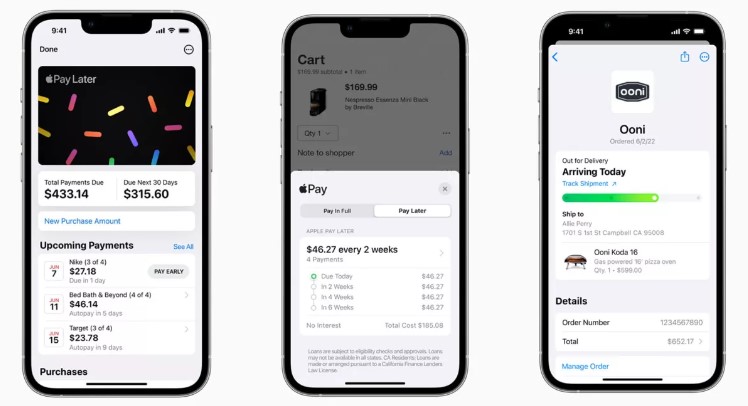
2-10 #Busy : Qualcomm has announced Snapdragon X35 5G Modem-RF system; Japan will shoulder a portion of capital investments related to a variety of semiconductors; Japan may opt for milder restrictions on chip production machinery sales in China; etc.

Qualcomm has announced Snapdragon X35 5G Modem-RF system, which is the world’s first to adopt NR-Light, a new 5G standard for midtier devices that do not require the power and performance of a 5G-capable smartphone or tablet , yet can still take advantage of the lower latency and power consumption offered by 5G technology. NR-Light, also known as “RedCap” (reduced capability), is a new 5G platform that was finalized last year to fill the void that existed between high-bandwidth 5G chips and radios designed to drive ultrafast mmWave and aggregated sub-6 speeds, such as Qualcomm’s Snapdragon X70, and extremely low-bandwidth Internet of Things (IoT) devices.(Pocket-Lint, Digital Trends, Qualcomm)
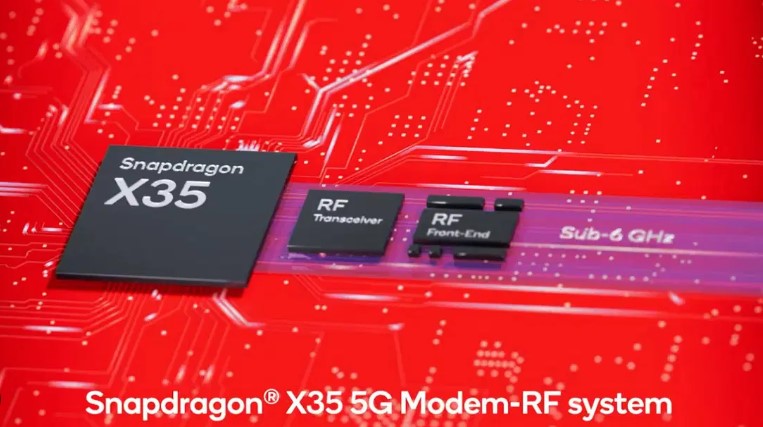
Qualcomm is apparently testing its Snapdragon 8cx Gen 4, dubbed SC8380, inside a development device with a 10” display. This indicates that the chipset will be aimed towards 10” (or larger) tablets and probably some 2-in-1 tablets and even Windows on ARM laptops too. The Snapdragon 8cx Gen 4 (code name Hamoa) will have 12 CPU cores, 8 performance (up to 3.4GHz) and 4 efficiency cores (up to 2.5GHz). Qualcomm has reportedly been testing Hamoa-based development devices since Nov 2022. (CN Beta, GSM Arena, Twitter, Winfuture.de)
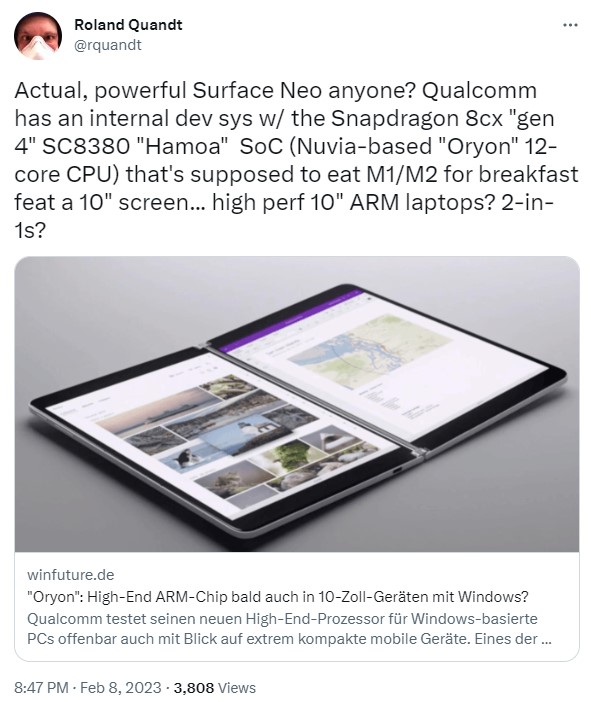
According to Gartner, the top 10 global original equipment manufacturers (OEMs) decreased their chip spending by 7.6% and accounted for 37.2% of the total market in 2022. Global inflation and recession pressures sharply weakened demand for PCs and smartphones in 2022, impacting global OEMs production. Most of the top 10 semiconductor customers are major PC and smartphone OEMs. All top 10 companies in 2021 remained in 2022, with Apple and Samsung Electronics retaining the top two spots. Only Samsung Electronics and Sony increased their chip spending in 2022. (CN Beta, Gartner)
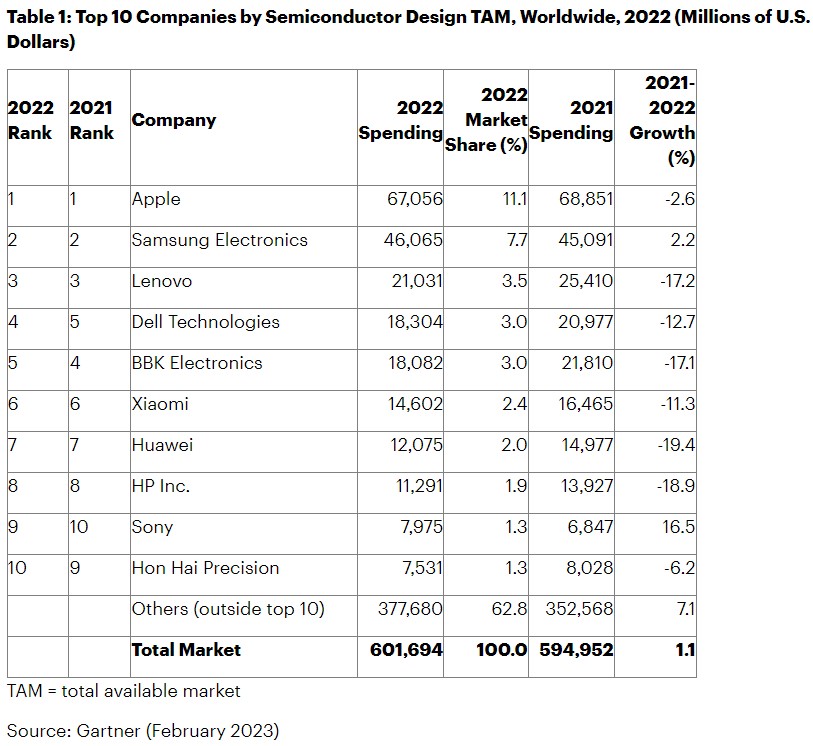
Jingjia Micro has said that the company is currently actively developing new graphics processing chip products, and it is currently progressing smoothly. Since its establishment, Jingjia Micro has focused on the R&D and technical iteration of graphics processing chips. After more than 10 years, it has successfully developed a series of graphics processing chips represented by JM5400, JM7200, and JM9, and successfully realized industrialization. JM9 series graphics processing chips have been successfully released, and the application fields cover geographic information systems, media processing, CAD-aided design, games, virtualization and other high-performance display and artificial intelligence computing fields. (Laoyaoba, STCN, Sohu)
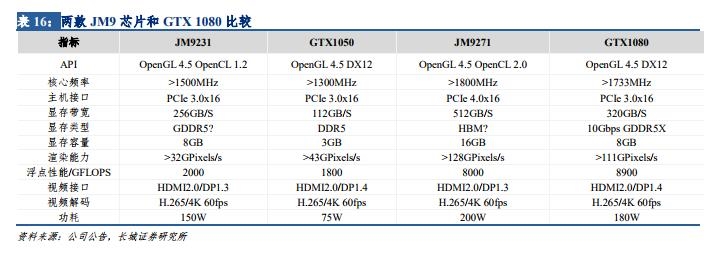
UNISOC has successfully completed the world’s first S-band 5G NTN (non-terrestrial network) technology satellite verification, collaborating with its industrial partners such as CTSAT, ZTE, SkyCells, CAICT, and China Telecom (Guangdong). This trial was based on the 3GPP R17 NTN protocol, which broke through the protocol matching problems such as frequency and time synchronization and realizing self-controllable 5G NTN end-to-end full link interconnection. The tested device in this verification is developed based on UNISOC’s R17 NTN chip.(Laoyaoba, iFeng, Zhihu)
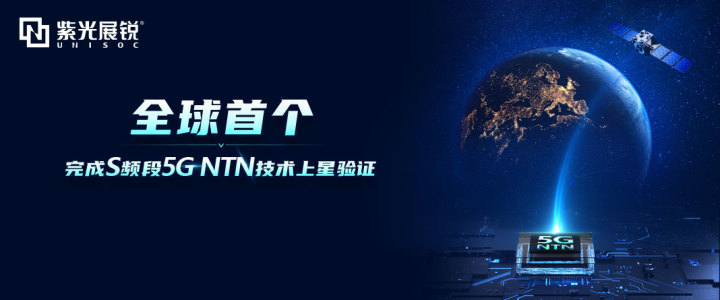
General Motors (GM) and GlobalFoundries (GF) have announced a strategic, long-term agreement establishing a dedicated capacity corridor exclusively for GM’s chip supply. GF has said the agreement for at least 3 years was the first of its kind and establishes a dedicated capacity exclusively for GM’s key chip suppliers at their upstate New York fabrication facility. This agreement supports GM’s strategy to reduce the number of unique chips needed to power increasingly complex and tech-laden vehicles.(CN Beta, CNBC, PR Newswire, Reuters)
Japan will shoulder a portion of capital investments related to a variety of semiconductors in exchange for 10 years of guaranteed production, expanding incentives for domestic chip manufacturing beyond cutting-edge products. The country designated semiconductors as a product critical to daily lives and economic activities under an economic security law enacted in 2022. It will dedicate JPY368.6B (USD2.8B) from a JPY1.3T supplementary fiscal 2022 budget to fund the new subsidies designed by the Ministry of Economy, Trade and Industry. Japan previously allocated JPY774B to support the domestic chip industry in a supplementary fiscal 2021 budget. Contract chipmaker Taiwan Semiconductor Manufacturing Co. is building its first Japanese plant in Kumamoto prefecture. (Laoyaoba, Asia Nikkei)
Japan may opt for milder restrictions on chip production machinery sales in China than those implemented by the United States even though they agree on export curbs, according to Akira Amari, a former Liberal Democratic Party minister of economy trade and industry. Japan agreed with the Netherlands and the United States to halt exports of equipment that China could use to manufacture advanced chips, bringing Tokyo and Amsterdam in line with sweeping restrictions announced by U.S. President Joe Biden’s administration in Oct 2022. (Reuters, The Register)

Apple has reportedly taken steps in its supply chain to shift the iPad lineup to OLED in 2024, and MacBook Pro by 2026. Samsung Display and LG Display are preparing their factories for mass production of the first iPads with OLED displays. The displays are “hybrid” panels, as they use a combination of flexible and rigid OLED technologies. The 10.86” display would be for an 11” iPad Pro and a 12.9” display obviously for the 12.9” iPad Pro — both set for a 2024 release. A 14” and 16” display are both being prepped for the 14” MacBook Pro and 16” MacBook Pro, but those would release in 2026. (Apple Insider, ET News, MacRumors)
Display Supply Chain analyst Ross Young has indicated that Apple’s first microLED Apple Watch will launch in 2025. he claims that new information from Apple supplier Osram confirms the information. The watch will measure in at 2.1” diagonally, which would make it appropriate for the larger Apple Watch Ultra. (Apple Insider, MacRumors, Twitter, Osram)
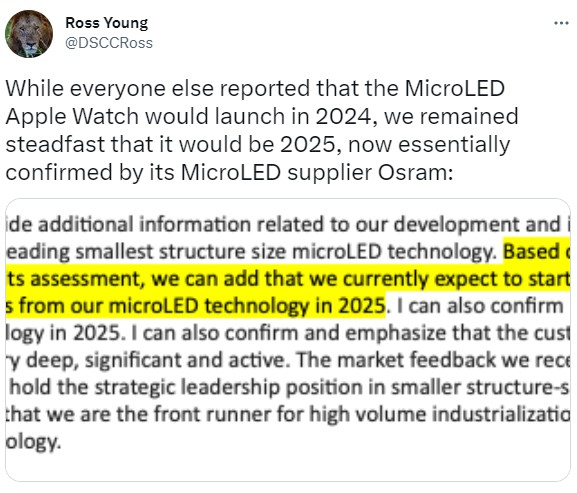
OnePlus has confirmed to launch its first foldable smartphone in 3Q23. The OnePlus V Fold and V Flip names were trademarked recently, which indicates two different types are coming.(Twitter, Android Headlines)
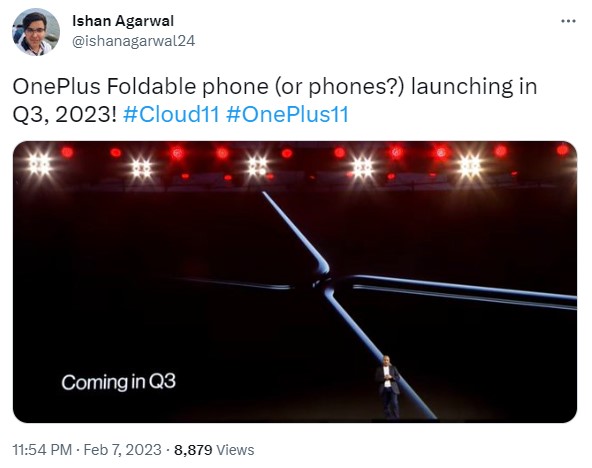
Samsung Display has recently applied for a trademark for the brand “FlexMirror”. The name suggests the product will be a flexible panel with reflective properties. Samsung Display has filed this trademark application with KIPRIS (Korea Intellectual Property Rights Information Service).(Android Headlines, SamMobile)
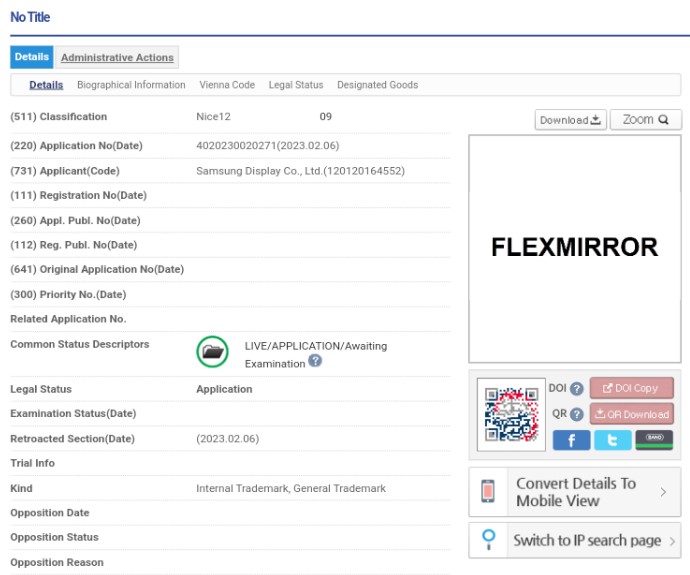
OLED material company Lordin has registered a patent related to blue OLED that has 4 times the luminance efficiency than previously. Lordin CEO Oh Hyoung-yun has indicated that the technology on the patent was differentiated from those in the US and Japan. The company is aiming to commercialize the technology on the patent in 2024. In 2021, when Lordin filed for the patent, the CEO told TheElec that the patent offers over 90% internal light emission efficiency in the blue OLED material. This is triple that of the 25% in efficiency offered in current OLED panels used in smartphones and TVs. (Laoyaoba, The Elec)
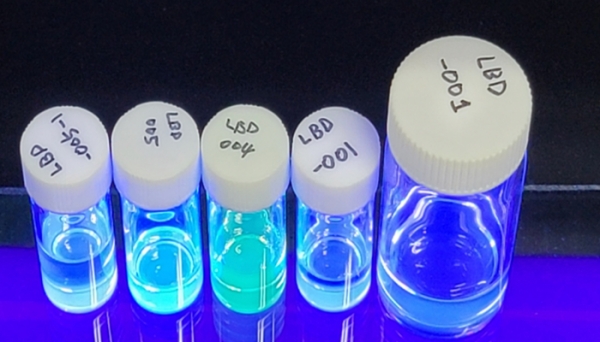

Executives at Samsung Electronics and SK hynix, the world’s two largest memory chip suppliers, visited the U.S. recently to request for a waiver from its chip rules on China. The companies are hoping to receive waiver from the rule or be given a similar grace period by the U.S. as was the case in Oct 2022 when it allowed the Korean companies to be freed for a year from chip equipment export control measures. The discussions involved follow-up measures related to the U.S. CHIPS and Science Act that was approved by Congress and signed by President Joe Biden in Jul 2022. Under the provision, if Samsung Electronics and SK hynix receive subsidies from the U.S. government, they will be restricted from carrying out additional investments in China for the next 10 years. (Laoyaoba, Electronics360, Korea JoongAng Daily, Pulse News)
Longsys has said that the company started to deploy SLC NAND Flash small-capacity storage chip business in 2019. In 2022, the company will be the first to launch a 512 Mb SLC NAND Flash small-capacity storage chip in mainland China, which can be widely used in the IoT market and can technically replace NOR Flash. Up to now, the company has achieved mass shipments of four self-developed SLC NAND Flash memory chips with different capacities.(Laoyaoba, Sina)
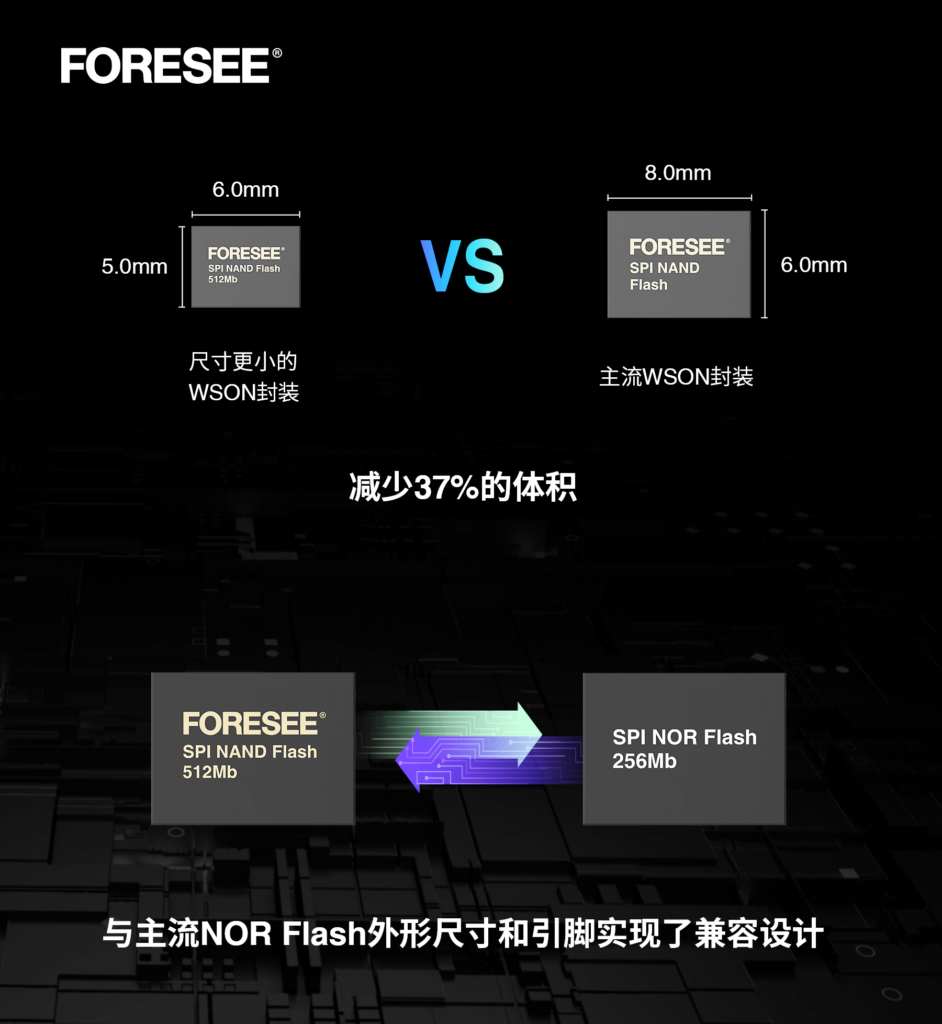
Amid a deepening slump in the memory semiconductor industry, Western Digital (WD), the fourth-largest company in the global NAND flash market, has announced a further reduction in its facility investment and production. WD has announced that it will also reduce NAND flash wafer production to 30% of the present level. This marked the first time Western Digital announces a production cut. SK Hynix announced a 50% cut in its facility investment in Oct 2022 and started to scale down production at its Wuxi plant. It announced on Feb 2023 that it would not cut investment anymore. (Business Korea, ICSPEC)
A semiconductor factory of Samsung Electronics in Texas, sued its insurer for more than USD400M in claims related to a power outage during a deadly 2021 winter storm. The federal lawsuit filed against Factory Mutual Insurance said the Austin plant suffered “catastrophic losses” from property damage and lost business. The insurer declined to cover the full cost as part of a “broader plan” to underpay all storm-related claims from policyholders in Texas. Factory Mutual paid Samsung USD126M of the USD400M claim, citing policy exclusions for events occurring outside the insured property.(Laoyaoba, Bloomberg, Law360)


Apple is allegedly continuing its work on full reverse wireless charging support for the iPhone, despite engineering delays. Reverse wireless charging, also referred to as bilateral wireless charging, is a technology that would allow users to not only recharge a phone with a wireless charger but also use the device to recharge an accessory. Internally, Apple is developing a unique “wireless power out” firmware as the basis for the feature. The work on this firmware is a major aspect of the ongoing testing and engineering of the reverse wireless charging hardware. (MacRumors, 9to5Mac, CN Beta)
Electrify America plans to raise EV charging prices in Mar 2023, with frequent users seeing the biggest price hike. Members of the company’s Pass+ frequent charging program will see rates increase to USD0.36 per kwh, while non-members will pay USD0.48 per kwh. Both rates increase by USD0.05 kwh, but Pass+ members also pay a USD4 monthly fee (which remains unchanged), and they’ll effectively see a 15% rate increase with the fee factored in. Price-per-minute rates are also going up. Customers will now be billed at USD0.15 per minute for charging at up to 90 kw (a USD0.03 increase) and USD0.29 per minute up to 350 kw (an additional USD0.05 per minute). (CN Beta, Green Car Reports, Inside EVs)
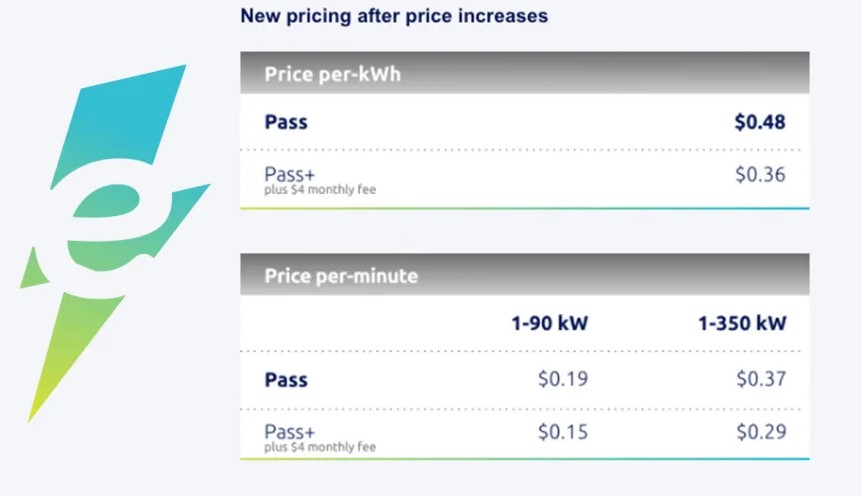
According to SNE Research, in 2022, the amount of energy held by batteries for electric vehicles (EV, PHEV, HEV) registered worldwide was 517.9GWh, a 71.8% YoY increase. The upward trend in the market has continued since the 3Q20. The global EV battery usage in 2023 is expected to reach approximately 749GWh. CATL and BYD have boasted an explosive growth in the market. CATL’s remarkable growth was led by increases in sales of Tesla Model 3 and Y, GAC’s Aion Y and Geely’s ZEEKR 001. High growth of BYD was favorably affected by strong sales of BEV and PHEV including Yuan, Han, and Qin PLUS EV in the Chinese domestic market. LG Energy Solution recaptured the 2nd place in the ranking with 70.4GWh, a 18.5% YoY increase. SK-On recorded 27.8GWh, a 61.1% increase, and Samsung SDI posted 24.3 GWh, a 68.5% increase. (CN Beta, SNE Research)
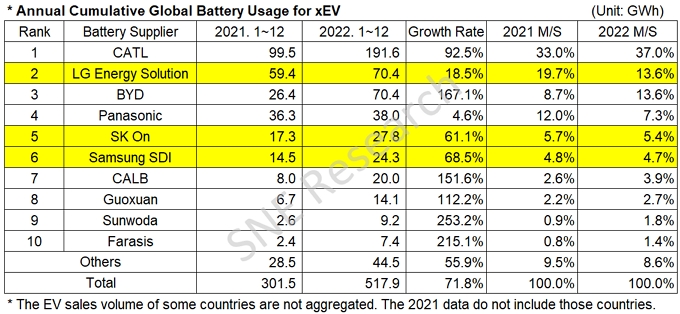
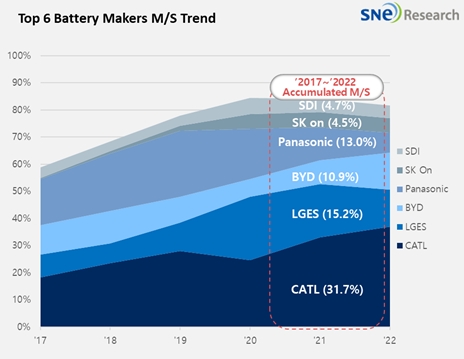
Leading Chinese silicon producer Tongwei Group has said it will invest CNY6B (USD884M) to build a high-purity polysilicon plant, despite an easing in China’s tight solar silicon supply situation. The plant will be built in Leshan, Sichuan province, with an annual capacity of 120,000 tons of the raw material used for solar cells. The plant will use some facilities at Tongwei’s Leshan production base to reduce the cost compared with other polysilicon plants of the same size. Tongwei’s three large-scale solar polysilicon production bases — in Leshan, Baotou in northern China, and Baoshan in the southwest — have had their capacities steadily increased in recent years due to strong product demand.(Laoyaoba, Yicai Global, Sina, CE.cn)
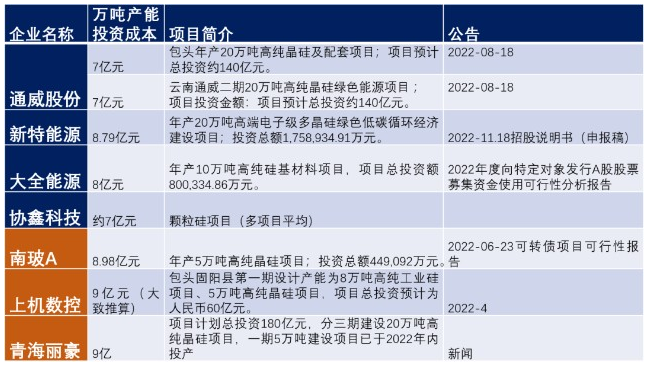
Chinese lithium salts producer Yahua Industrial Group has inked a deal to supply South Korean chemical and electric battery giant LG Chem with battery-grade lithium hydroxide over 4 years. Yahua will sell 30,000 tons of battery-grade lithium hydroxide to LG Chem from 2023 through 2026. The two companies will decide the cost of the materials using a jointly agreed formula. Based on the current market price of battery-grade lithium hydroxide of around CNY500,000 (USD73,608) a ton, the deal is expected to be worth about CNY15B (USD2.2B) for Yahua.(Laoyaoba, Yicai Global, ITDCW)
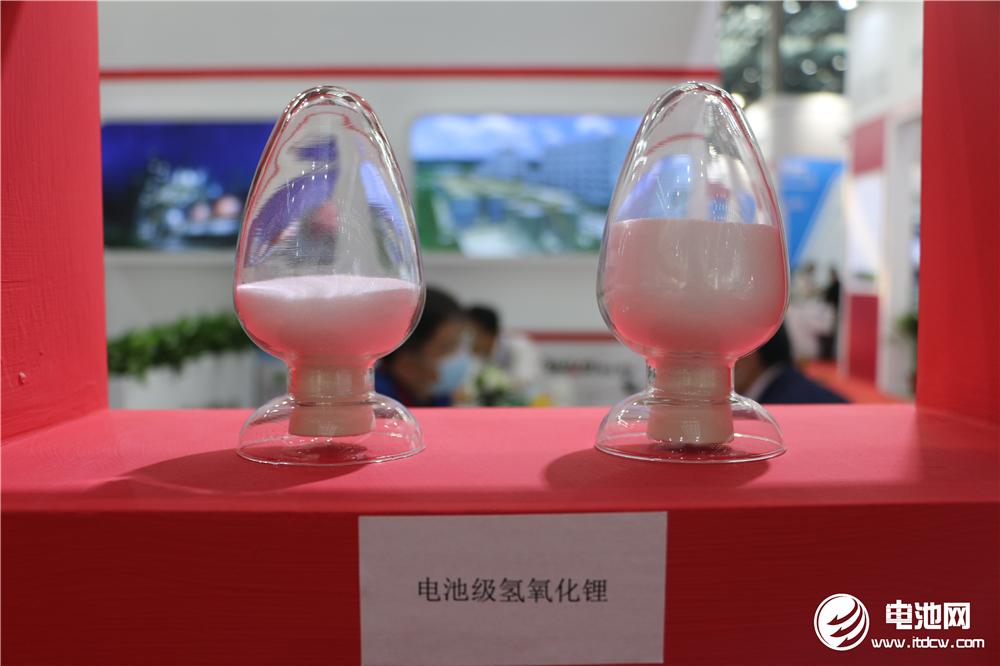

According to Counterpoint Research, Samsung plays a critical role in strengthening Google’s presence in the high-end segment and contributes to more than half of the Google Pixel 7 Pro’s bill of materials (BoM) cost. Samsung Display exclusively supplies the model’s brand-new screen, which accounts for around 20% of the BoM cost. Google ranks second in terms of cost contribution, accounting for over 7% of the model’s BoM cost. (Gizmo China, GSM Arena, Counterpoint Research)
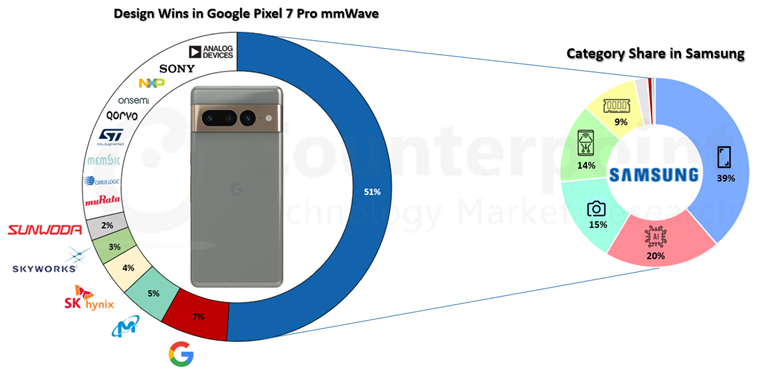
Zoom has announced it is letting go of 1,300 employees, or 15% of its total workforce. Zoom CEO Eric Yuan has noted that in the last 24 months, Zoom added 3 times its previous employee workforce, as tons of companies started using its video conferencing software during the Covid-19 pandemic. Zoom calls became a normal way of life for a while, as employees stuck at home used the software to hold meetings with fellow employees.(Neowin, Zoom)
Huawei has filed a word trademark “Xingyao” and “Xingyao Edition”, which is internally categorized under the scientific instrument or device. The trademark approval is currently pending, which may take some time. Huawei has various technologies and ideas that the company safe keep for various purposes.(My Drivers, Sina, IT Home, Huawei Central)

Via Licensing Corporation and OPPO have announced that OPPO has secured a license to Via’s Advanced Audio Coding (AAC) patent pool. This global agreement encompasses smartphones, for which OPPO is ranked fourth for worldwide sales. Advanced Audio Coding is defined by a set of International Standards from ISO/IEC. It specifies a coding method that allows consumers to enjoy high-quality audio with high compression efficiency, reducing the amount of data to be transmitted and the processing power required for playback.(Laoyaoba, Yahoo)

Huawei is reportedly working on a new upcoming lineup of smartwatches. The companion app for their watches – Huawei Health, has now listed a few upcoming smartwatches. A complete lineup of the forthcoming gadget with the model number AOD-H1 has been spotted on the Huawei Health application. (Gizmo China, Sina)

Meta has completed its purchase of the virtual reality workout app maker Within, bringing Supernatural and other projects into Meta’s fold. The two did not elaborate further on their plans, but Within said in Oct 2021 that it would continue to develop Supernatural exercise content under Meta’s Reality Labs wing. (Engadget, Twitter)


FF Global Partners (FFGP), the founding shareholder and a partnership of key Faraday Future (FF) has announced that with the support of FFGP, Faraday Future Intelligent Electric (FFIE) has raised USD135M in funding (including USD10M previously funded by an investor as an advanced payment). This means they have “received sufficient financing commitments for the funds required for SOP of the FF 91 Futurist”.(My Drivers, Business Wire, Carscoops, PR Newswire, Autoblog, Twitter, Faraday Future)
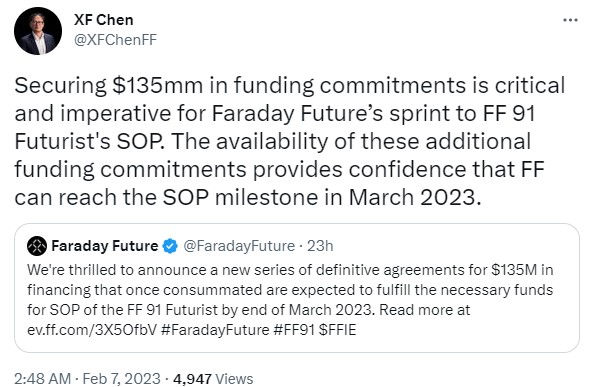

Microsoft reportedly wants to add ChatGPT to its search engine Bing. The integration was expected to arrive as soon as Mar 2023. Microsoft is positioning it as an evolution of the search engine, asking user to think of it as “an research assistant, personal planner, and creative partner at your side. The integration will be powered by OpenAI’s GPT-4, a faster version of ChatGPT. (Android Headlines, 9to5Google, Medium)
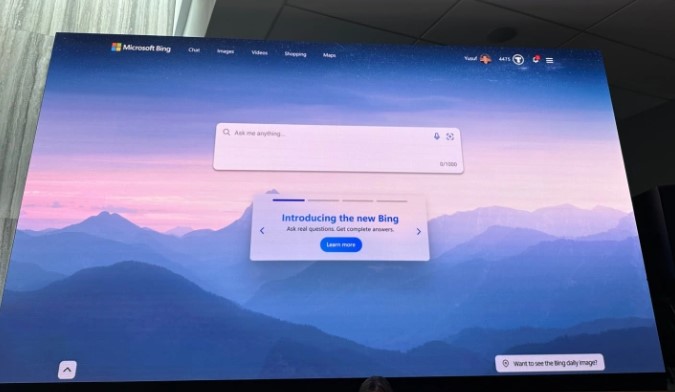
Google’s CEO, Sundar Pichai, has announced “Bard”, describing the tool as an “experimental conversational AI service” that will answer users’ queries and take part in conversations. This new conversational chatbot will incorporate Google’s Language Model for Dialogue Applications (LaMDA) to power its anwsers to questions and inquires. Pichai has stated that Bard will not only be able to handle answers to simple questions, like Google’s current search engine can do already, but it can also handle more complex inquiries. (The Verge, TechCrunch, Neowin, Google)

Google has announced a few updates and new information across multisearch, Android and Google Lens specific to Google Search. Google has shared that its newer “multisearch” feature would now be available to global users on mobile devices, anywhere that Google Lens is already available. The search feature, which allows users to search using both text and images at the same time. A variation on this, “multisearch near me,” which targets searches to local businesses, will also become globally available over the next few months, as will multisearch for the web and a new Lens feature for Android users. Google’s multisearch is powered by A.I. technology called Multitask Unified Model (MUM), which can understand information across a variety of formats, including text, photos, and videos, and then draw insights and connections between topics, concepts, and ideas. Google put MUM to work within its Google Lens visual search features, where it would allow users to add text to a visual search query.(CN Beta, TechCrunch, Search Engine Land, Android Police, Google)

Microsoft has announced an upgraded version of its Bing search engine and Edge browser that integrates the ChatGPT chatbot. Microsoft calls it the “new Bing,” and it will have chat functionality where people can ask questions and receive answers in natural language. It uses an updated version of GPT 3.5 called the “Prometheus Model”, which offers more up-to-date information with annotated answers.(Android Authority, Digital Trends, Apple Insider)

Baidu is set to roll out its own artificial intelligence (AI) chatbot, Ernie, in Mar 2023. Ernie, which stands for “Enhanced Representation through Knowledge Integration,” is Baidu’s AI-powered large language model that was introduced in 2019. The model, which will serve as the foundation for Ernie Bot, has reportedly become capable of language understanding and generation, and text-to-image generation. Baidu aims to make Ernie Bot available as a standalone application. The company then plans to integrate the tool into its search engine.(Neowin, CNN, Reuters, Bloomberg, The Paper)
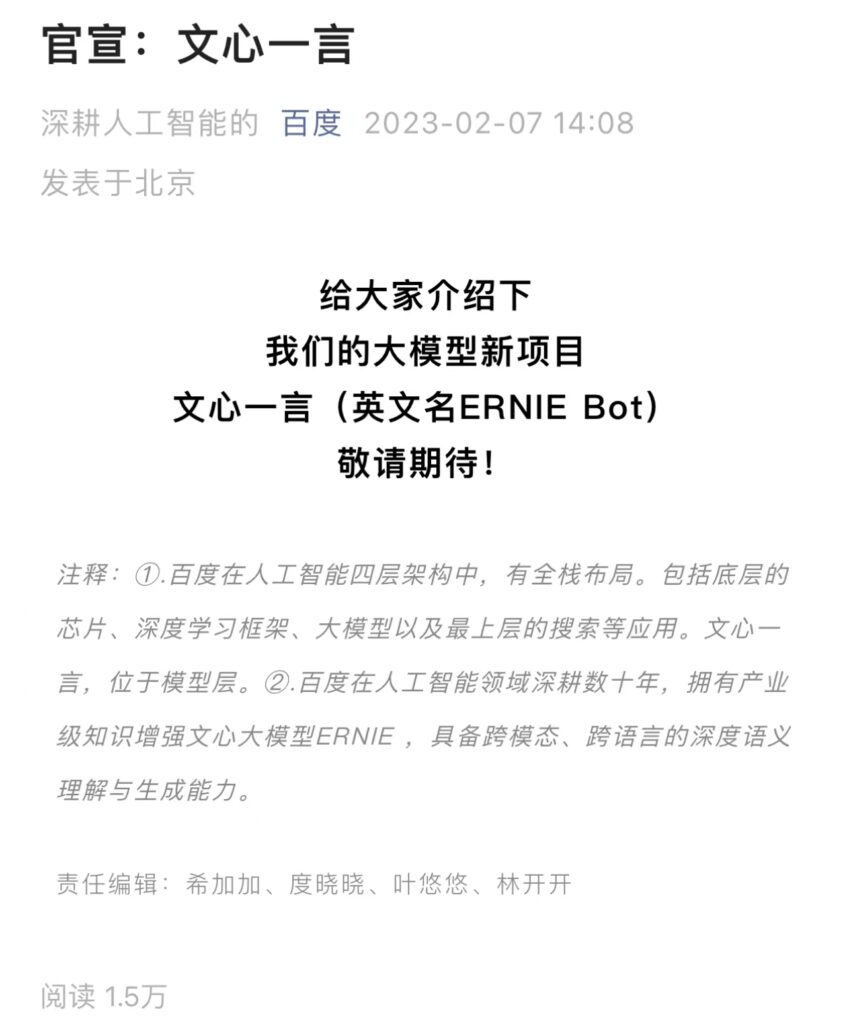

eBay has announced plans to cut 500 jobs, or about 4% of its workforce, according to a filing with the SEC. CEO Jamie Iannone said the company decided to do layoffs after examining the global macroeconomic environment over the past several months. He said the cuts will strengthen eBay’s ability to deliver better experiences for its customers, and it will help eBay focus on areas where it can make the most impact.(CN Beta, Channel News, Inside Retail, CNBC)

Apple has expanded the internal testing for its Pay service’s buy now, pay later feature to include its retail employees Apple Pay Later, first revealed in 2022, would allow customers to split the cost of a purchase made on an iOS device across “4 equal payments over 6weeks, without incurring interest or late fees”.(Engadget, Bloomberg, TechRadar)
